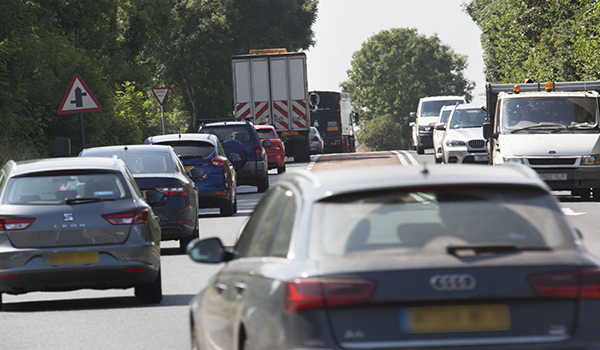The scheme in detail

Background
- The A303/A358 corridor is a vital connection between the South West and London/South East.
- Millions of people use this road every year for business and leisure.
- On a normal day, up to 23,500 vehicles use this single carriage way section, at weekends in the summer the number of vehicles using this section can increase to 30,200 vehicles per day.
- Where the A303 moves from dual carriageway to single carriageway, it creates bottlenecks, causing congestion, delays and an increased risk of accidents.
- The bottle necks prevent businesses from reaching their potential. This adversely affects quality of life in nearby communities. It also makes the South West seem like a hard place to get to.
- Without improvement, the performance of the road will deteriorate, congestion and delays will increase, and road access will be an increasing barrier to growth and prosperity.
- In 2014, the Government announced £2 billion to start transforming the A303/ A358 corridor into a continuous high quality dual carriageway for the whole route to the South West. The aim is to create a road where ‘mile-a-minute’ travel is the norm.
- To support this, within the Road Investment Strategy (RIS) 1 period, we have developed 3 major road schemes along the A303/A358 corridor including the A358 Taunton to Southfields, the A303 Sparkford to Ilchester dualling scheme and A303 Stonehenge. Find out more about the A358 Taunton to Southfields scheme on our webpage. Find out more about the Stonehenge scheme on our webpage.
Specifics of the scheme
The new dualled section will start east of Podimore Roundabout and will follow the alignment of the existing A303 to Downhead. Travelling eastwards, it then moves north of the existing A303 single carriageway, allowing the existing road to be kept for use as a local road in this section. The route then rises up West Camel Hill before crossing over the existing A303 at the junction with Steart Hill/Howell Hill. It then takes a southerly alignment before meeting up with the existing road again to pass between Vale Farm and the Ministry of Defence signal station at Eyewell/Traits Lane.
The scheme includes:
- Upgrading 3.5 miles of existing single carriageway to dual carriageway.
- We will be building 3 new junctions at Camel Cross, Downhead and Hazlegrove which safely separate traffic.
- There is going to be 2 new structures a bridge at Steart Hill and an underpass at Hazlegrove which will allow road users to cross the A303 safely.
- The construction will involve excavating and redistributing 900,000m3 of earth and soil to create cuttings up to 10m in depth and embankments up to 12m in height to provide a level route for the new road.
- The project will cost about £130million to £160million to build.
The scheme is bordered by a number of local points of interest including:
- Scheduled monuments, which are registered as being significant with Historic England
- Sites of Special Scientific Interest
- Conservation areas
- Registered Parks & Gardens
- Grade I and II listed buildings
- Ministry of Defence Signal Station at Eyewell/Traits Lane
- Royal Naval Air Station Yeovilton.
Details of how we will protect and minimise any adverse impact on these areas can be found in the protecting the environment section of this exhibition.
The scheme requires the acquisition of land and National Highways have published a landholders guide to property and compensation. The Book of Reference detailing land plots can be found on the scheme web page and land plans can be viewed on the Planning Inspectorates Development Consent Order (DCO) website.
- Downloads
- Scheme overview map










